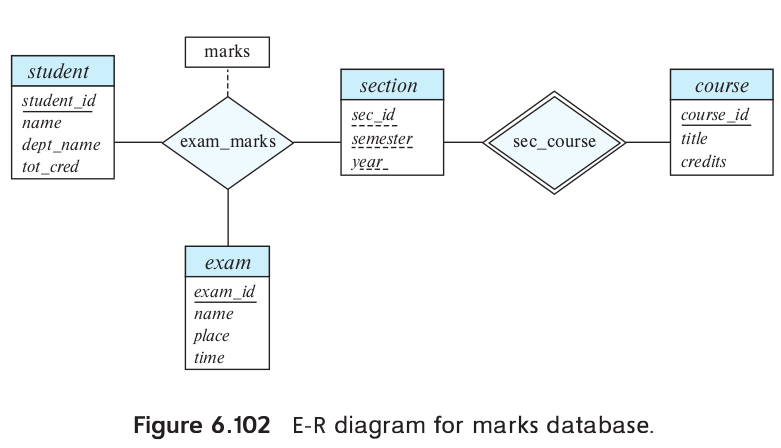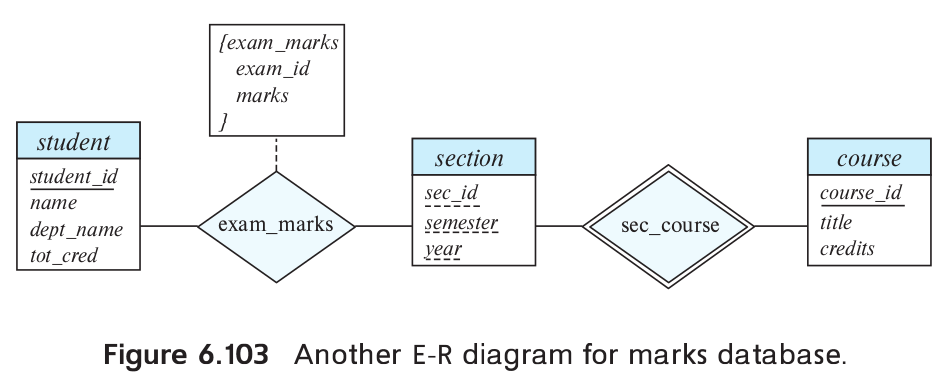6.2
Consider a database that includes the entity sets student, course, and section from the university schema and that additionally records the marks that students receive in different exams of different sections.
Construct an E-R diagram that models exams as entities and uses a ternary relationship as part of the design.
Construct an alternative E-R diagram that uses only a binary relationship between student and section. Make sure that only one relationship exists between a particular student and section pair, yet you can represent the marks that a student gets in different exams.
- The E-R diagram is shown in Figure 6.102. Note that an alternative is to model examinations as weak entities related to a section, rather than as strong entities. The exam_marks relationship would then be a binary relationship between student and exam, without directly involving section.

- The E-R diagram is shown in Figure 6.103. Note that here we have not modeled the name, place, and time of the exam as part of the relationship attributes. Doing so would result in duplication of the information, once per student, and we would not be able to record this information without an associated student. If we wish to represent this information, we need to retain a separate entity corresponding to each exam.

Note that: exam_marks, the descriptive attribute of the relationship exam_marks, is a composite multivalued attribute.